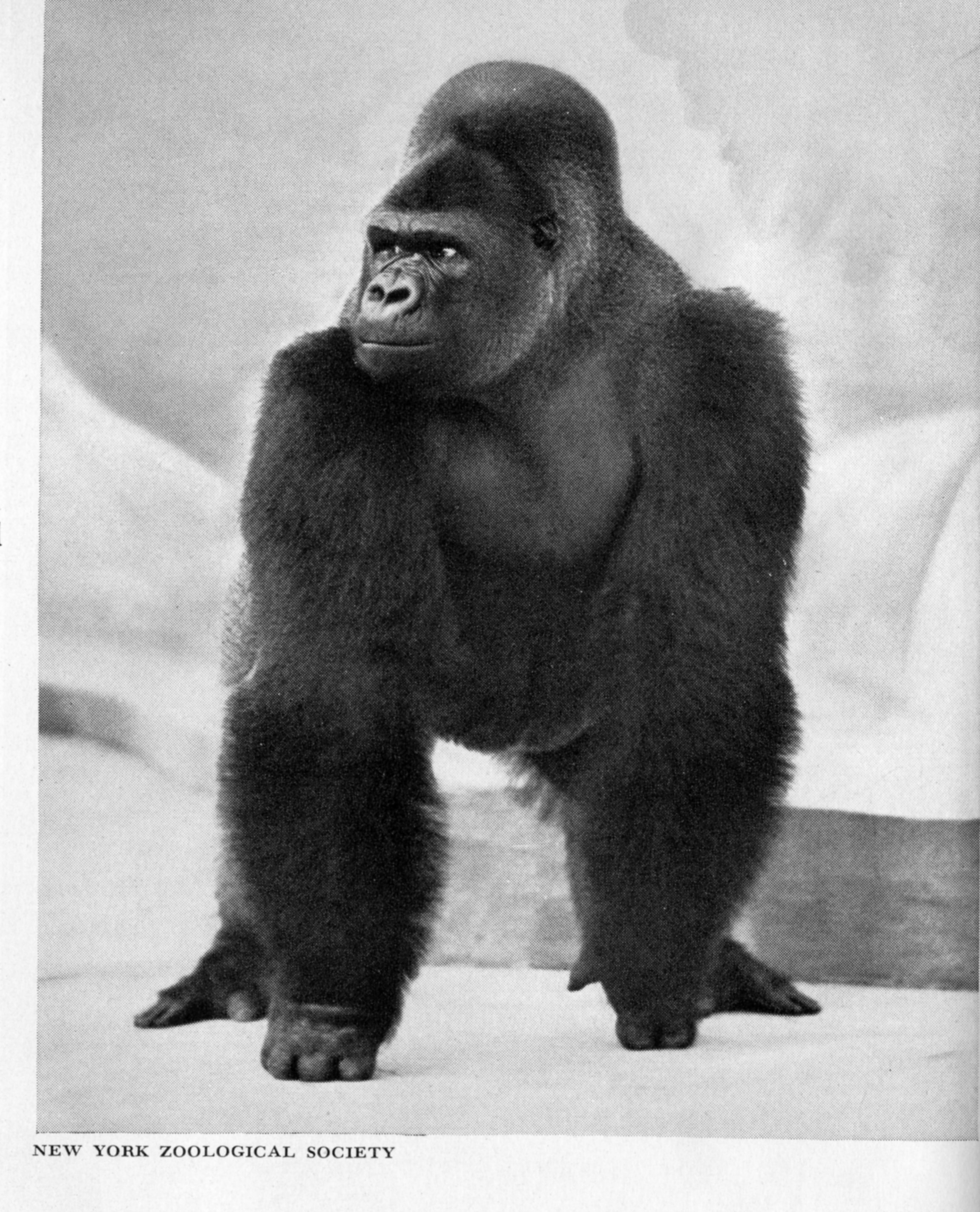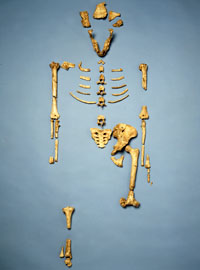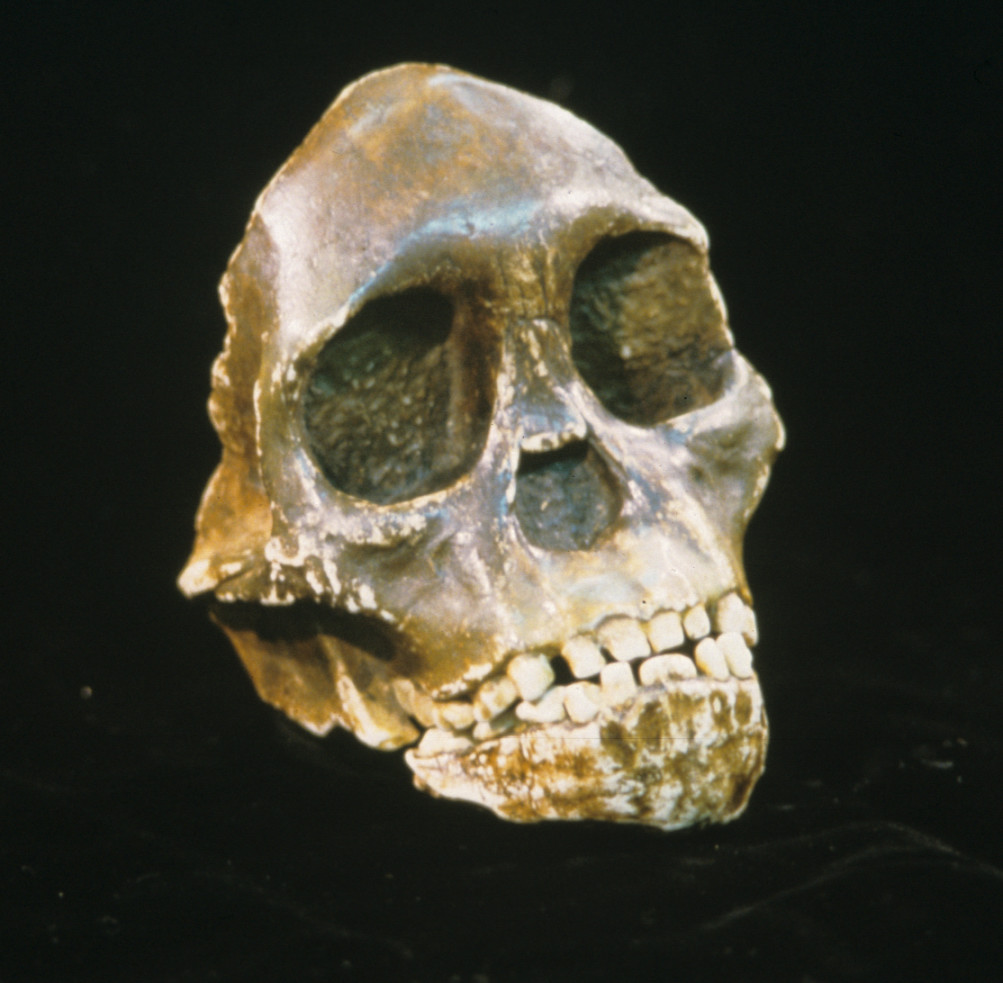Organismal Biology — Lab 13 online
PRIMATES and HUMAN EVOLUTION
Download the instructions for this lab.
Order PRIMATES

OVERVIEW OF PRIMATE EVOLUTION


Introduction to Living species
Suborder SPREPSIRHINI: Lorisoids

| 
|
 | Above: two slow lorises Below: a slender loris Left: a "bushbaby" (Galago) 
|
Suborder SPREPSIRHINI: Lemuroids
 Mouse lemur (Microcebus) |  Dwarf lemur (Cheirogaleus) |
 Ring-tailed lemur (Lemur catta) |  Ring-tailed lemurs (Lemur catta) |

Sifaka (Propithecus)

Sifaka (Propithecus)

Aye-aye (Daubentonia)
Suborder HAPLORHINI: Tarsioids

EARLY FOSSIL PRIMATES

Plesiadapiformes

Plesiadapis, a very early primate
with well-developed arboreal adaptations
EUPRIMATES

Teilhardina, the earliest known euprimate

Skulls of tarsioid primates

Two Eocene lemuroids:
Notharctus (above); Smilodectes (below)

TWO TYPES OF MONKEYS


PLATYRRHINA
New World monkeys (Cebidae):
 Capuchin monkey (Cebus) |  Squirrel monkey (Saimiri) |
 Squirrel monkey (Saimiri) |  Spider monkey (Ateles) |
 Spider monkey (Ateles) |  Howler monkey (Alouatta) |
Marmosets:

Goeldi's lion marmoset (Callimico)
Superfamily CERCOPITHECOIDEA
Family Cercopithecidae
Colobus monkey:

Langur monkeys:
 |  |
 |  |
 |  |
 |  |
Savanna baboons (Papio)
   |   |
Mandrills
 |  |
Rhesus monkey (Macaca rhesus)

Macaca sylvestris (Barbary macaques) on Gibraltar
(photos & film courtesy of Hannah Dixon)
 |  |
Click here for a video clip
Vervet monkey (Cercopithecus)

Fossil CATARRHINA


Aegyptopithecus, an early Catarrhine
(Fayum formation, Oligocene, Egypt)
Miocene apes (i.e., from time period 24 to 6 million years ago):




A scene showing Miocene apes in Kenya
LIVING A P E S

Lesser Apes (Hylobatidae)
Gibbons (Hylobates) |  |

Brachiation, a suspended arm-swinging locomotion

Gibbon, showing brachiation
Great Apes: Orangutans (Pongo)
 |  |
 |  Notice the use of a grass stem as a tool to go "fishing" for termites |
 |  |
Hominoid evolution: the fossil record


Human and chimp--
Notice the contrast between the more curved tooth row
in humans and the parallel tooth rows in apes



Laetolil footprints, clear evidence of
upright walking, about 4.1 m.y. ago

possible A. afarensis (left);
modern human foot (right)

Australopithecus afarensis ("Lucy")

Smithsonian Museum's reconstruction of
"Lucy" (A. afarensis) in walking position
 |  |
|
Skull and teeth of A. afarensis.
The tooth rows are more human than ape-like (compare with the earlier photo, above) | |

Australopithecus africanus (Taung child)
 |  Mrs. Ples |
| A. africanus ("Mrs. Ples") | |
 |  |
| Australopithecus africanus | |

A. robustus

A. africanus; A. robustus

Australopithecus boisei and Homo habilis
(both from Olduvai gorge, Tanzania)

Skull evolution
Homo erectus
Homo erectus skeleton (Nariokotome, Kenya)  |  |
 H. erectus (above and right) |  |

H. erectus ("Peking Man" or "Sinanthropus" from Zhoukoudian cave)

H. erectus ("Sinanthropus")

H. erectus with outline of H. sapiens,
showing the change in skull proportions
Homo sapiens



H. sapiens (Neanderthal from La Ferrassie)

Modern H. sapiens (from Skhul)

Modern H. sapiens (from Qafzeh)

Agriculture developed independently in many places,
using different species depending on local availability
—— revised April 2020 ——